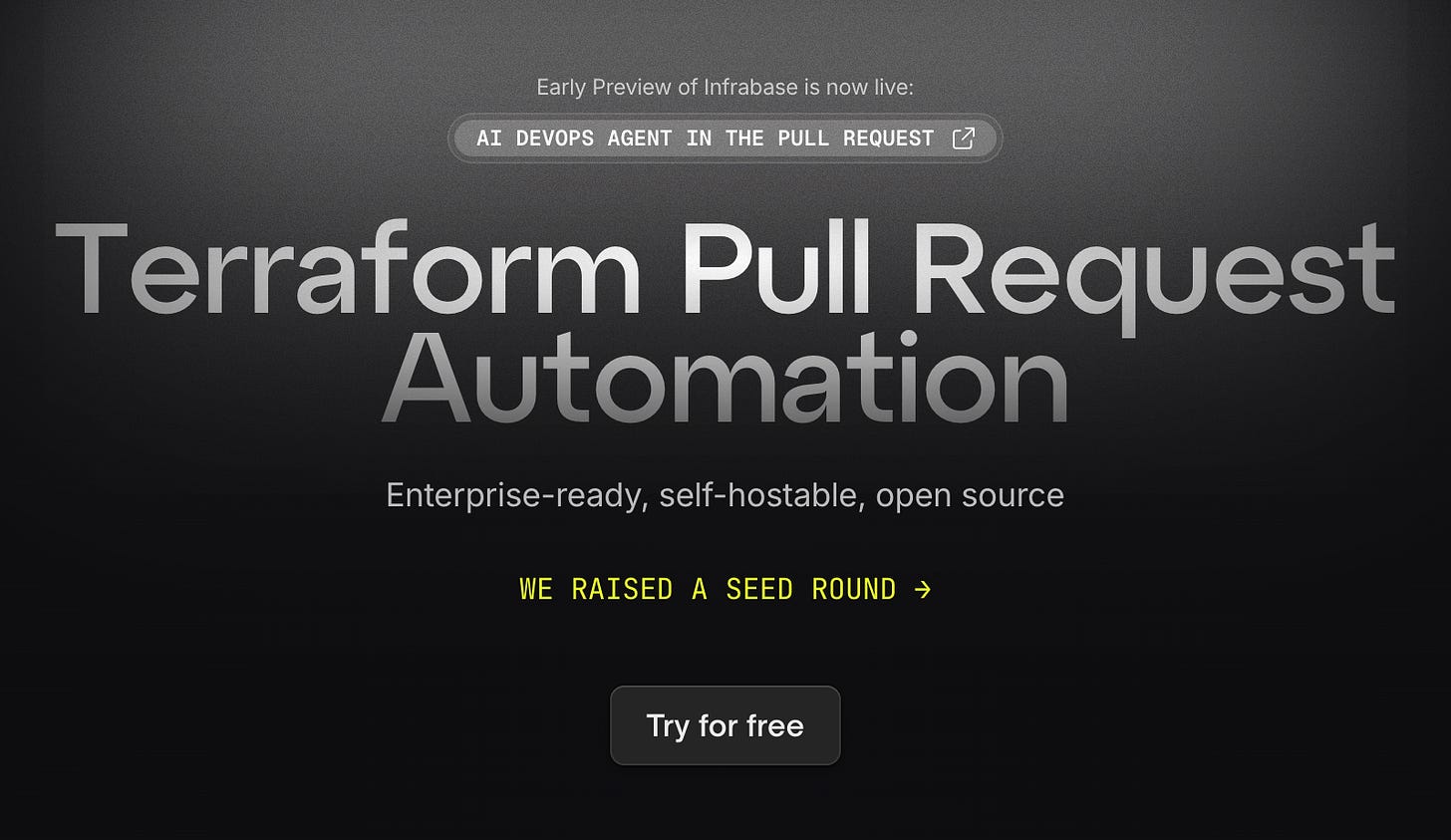Digger: Pull-Request Infrastructure Automation for the AI Era
Proud to be an investor in Digger, the open-source Terraform orchestrator that sits inside your existing CI and catches issues before they happen. The round was led by Initialized Capital, alongside founders like Olivier Pomel (CEO, Datadog), David Cramer (Co-founder, Sentry), Michael Grinich (CEO, WorkOS), Zeno Rocha (CEO, Resend).
Infrastructure is still a tax on creativity. Every new cloud primitive adds knobs and the AI boom only multiplies infra surface area; every manual review adds delay. We believe the best infra vanishes into the pull-request: visible only when it stops you from making a costly mistake. As a former engineer, I believe in this mission. Build infrastructure so invisible, the only thing developers notice is how fast they ship.
Developers: this post is for you. It breaks down two “super-powers” that make Digger hard to un-install, shares what users tell us, and explains why the problem space is only getting bigger.
Ship-Blocking Terraform Reviews != Friday Fun
Teams still hit apply after code is merged, hoping nothing breaks.
When incidents cost five-figure GPU hours, or your Monday deploy “Merge first, pray later” is untenable. Yet most Terraform automation:
Duplicates CI (Terraform Cloud, Spacelift)
Sends secrets to a third-party
Charges per resource—right when infra is exploding
HashiCorp’s license switch and IBM’s $6.4 billion buy-out only amplified the frustration and the OSS backlash.
From Pipeline Sprawl to Pull-Request Infrastructure
Digger embeds Terraform plan/apply inside the CI you already run.
Two YAML lines add a GitHub Action; the CLI spins in your runner; credentials never leave.
Every infra change is reviewed exactly where you review code. No second pipeline, no new UI, no per-resource tax.
If Dieter Rams wrote code, he would say that Digger follows the principles of good design: less, but better.
Super-Power #1: CI-Native Execution
Like letting GitHub Actions sprout a Terraform brain:
Re-uses on-demand runners → horizontal scale is “just run more jobs”
Locks state, queues applies, and posts one running summary comment, no page reloads
Parallelizes projects that don’t collide, shaving deploy time by double-digits
Result: 6 800 successful deployments per week, growing 19 % m/m, without a single new server to babysit
Super-Power #2: Open Source Freedom + AI Guardrails
Digger’s Apache-2 OSS core (4.5 k stars, 500 k downloads) drives a fast community loop.
On top, the new Infrabase agent parses every plan for cost, security, and compliance drift the moment you open a PR—and lets you write rules in plain English.
Think Checkov meets ChatGPT stitched straight into git diff.
What Users Say
“Faster and more responsive than any comparable tool we've used—lets us iterate and catch issues earlier.” — Soumik Dey, Avoma
“Locking forces collaboration between overlapping PRs… Life has been simpler ever since.” — Francois Leroux, NuEcho
When developers describe infra automation as “simpler” and “can’t ship without it,” you’ve crossed from nice-to-have into default.
Why the Market Will Only Swell
AI sends infra surface area vertical—vector DBs, GPU clusters, agent fleets; every tweak is another Terraform diff.
3 billion+ downloads of the AWS Terraform provider prove IaC is the nerve center of cloud ops.
Cost-watch CFOs now ask, “Why pay twice—once for CI, once again for Terraform CI?” Digger’s reuse model answers that.
OSS momentum post-HashiCorp gives CI-native, self-hostable tools a tail-wind.
If You’re an Engineer—Kick the Tires
Install the Digger GitHub App on a repo with /terraform.
Open a dummy PR.
Watch the bot plan, comment, and (if you allow) apply—usually in <4 minutes.
If it saves you one outage or one sleepless Friday, star the repo and tell us what’s missing. I love to get product feedback and hear about modern day developer aches and pains. DM me, let’s talk!
If the next decade belongs to software that self-heals before it ships, Digger sits at the hinge: every merge request becomes an exercise in building robustness, not adding fragility. The optionality embedded in an OSS core, AI guardrails, and founders who iterate at the speed of their users renders this bet as timeless today as Linux felt at 1.0.
If you like this essay, consider sharing with a friend or community that may enjoy it too.


